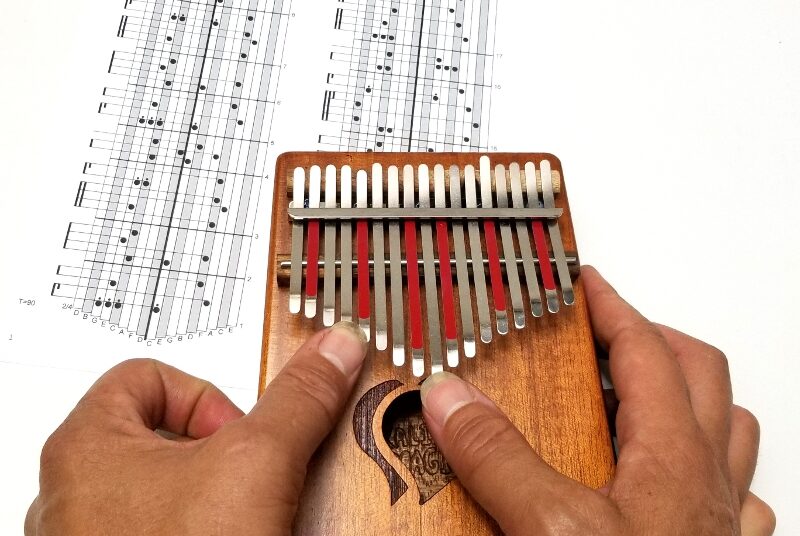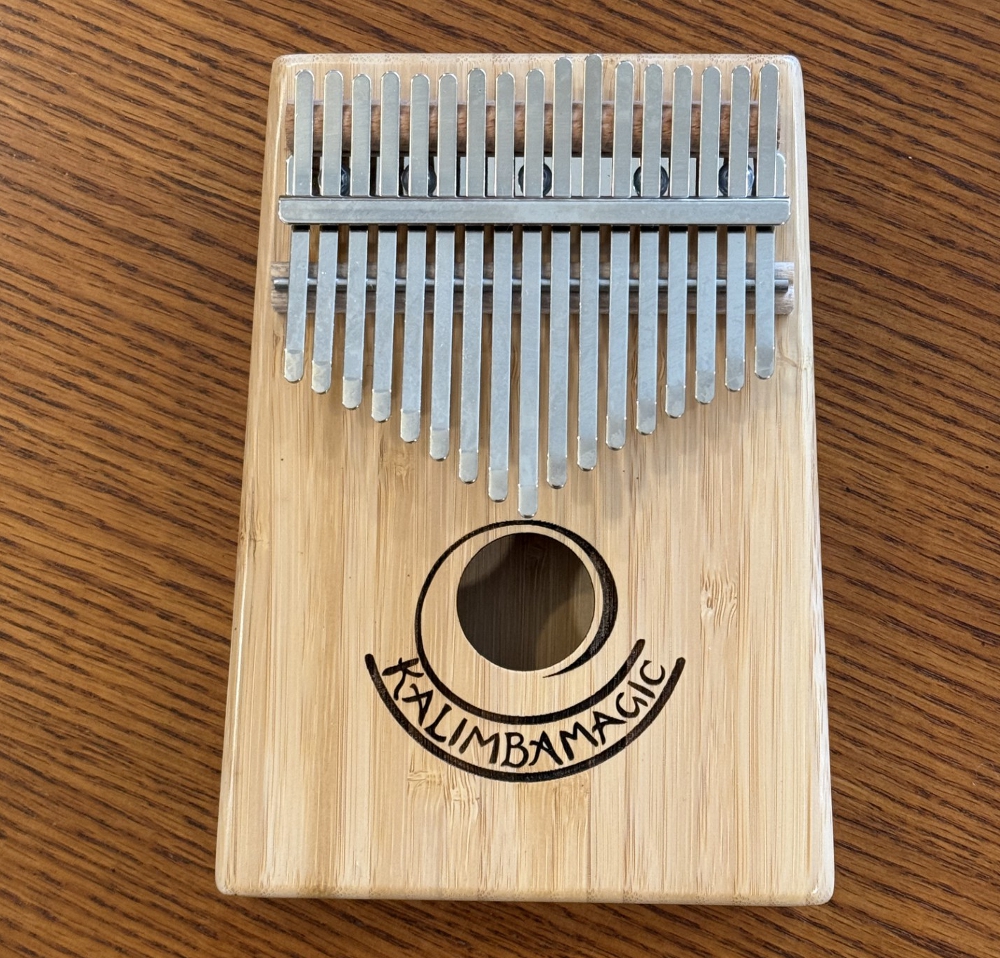
Use of this website constitutes acceptance of the Privacy Policy and User Agreement. Copyright © 2020 Kalimba Magic. All Rights Reserved.
I have written before about how much fun it is to find variations that work with traditional African kalimba music. This article elaborates on this subject, and how I went about creating my own variations, first by improvisation, and then later in composition inspired by those earlier improvisations.
Even in the case of songs such as “Wa Kalulu” for which only a standard part notation exists, we can create essentially infinite variations to go along with this music. All it takes is two karimba players, one with a good grasp of the song as written (in the book “30 Traditional African Songs for Karimba” for example) and another player who has several attributes: a fertile imagination, the flexibility to change what they are playing when the music they are playing isn’t working with the original part, and the sense to stay put for a while when they stumble on something good.
Several months ago, I was hiking with a karimba player. She was keen to practice the basic “Wa Kalulu” part (also referred to here as the “original part”), and I was keen to create a second karimba part to accompany the basic song. I improvised along with my playing partner’s set part, slowly building in complexity. I also started generally lower on the instrument and went higher up as the music got more complex. To cue my playing partner that I was near the end, I simplified the part, playing fewer notes, playing more softly, and bringing the notes generally lower in pitch. I also tried to play something that did not “fight” the original part, but rather supported it. You can hear this nicely demonstrated in the media player at the bottom of this page.
After I got home that afternoon, I opened up my KTabS (Kalimba Tablature Software) program and notated what I could remember of what I had played earlier in the day on our hike. When I was improvising, I would quickly move past bad improvisations, but would dwell for a long time on improvisations that sounded good, repeating them many times, knowing that I would be more likely to remember the good things that I was playing. Sure enough, I think I was able to capture the essence of much of what I had improvised a few hours before.
The variations I wrote down, notated in tablature, are available for download here:
Download Tab (PDF) for the standard “Wa Kalulu” part
Download Tab (PDF) for my variations to add to the standard part
I should note that I have been playing karimba for 11 years, and my playing partner has been playing for only a few years, so we are playing at very different levels. Playing the basic part was perfect for her, as she needed that practice. Exploring new accompanying variations was fun and productive for me. Having me jump all over from one variation to the next can be quite distracting to someone working on playing the basic part – which is the whole point. She was not just practicing playing that part, she was also practicing holding to that part in the face of unexpected music that worked with her part in evolving ways.
Now, my playing partner is ready to begin her own improvisations and variations, which means that it is time for me to support her by playing the basic part as she begins her explorations.
This sort of playing is great sport, and I encourage you to try it. If you don’t have another karimba player to play with, you can play your variations along with the recordings for each of the traditional songs that come with the book or download purchase.
When I create additional parts to go along with the traditional karimba part, I first seek rhythmic compatibility, then harmonic compatibility. Finally, I seek melodic unity. When I improvise, my goal is to have melodies borne out of the combination of the basic original music PLUS the new parts I am generating, not through repeating any of the original material. One of the real magical things about African music is how it lends itself to, and even encourages, this kind of collaboration.
Another consideration is found in the nature of the kushaura (leading) and kutsinhira (following) mbira parts – the two interlocking parts that two mbira players will play to give the music more complexity. To a large extent, the kutsinhira part plays in the “holes” of the kushaura part. A factor that makes it easy to create a second karimba part for “Wa Kalulu” is that the original notated part utilizes only the lower row of notes. This means that the first karimba (kushaura) does not play any of the upper row notes, meaning that the second karimba (kutsinhira) can play those upper notes without having to worry too much that they will clash badly with the first karimba’s part.
Click on the media player below to hear a recording of KTabS playing both the standard “Wa Kalulu” part together with the new variation that I wrote. For the first 5 seconds of the sound recording you’ll hear the standard part by itself. When the new part comes in, its generally higher notes make unexpected harmonies and melodies with the high notes of the standard part, while the lower notes of the standard part make and hold the simple base line.
When you find yourself actually improvising and creating variations with someone, I think you will strongly agree with me: It is such a cool feeling when, side by side, you synthesize a melody that could not have existed had the two of you not been playing together. This is one of my life’s biggest joys!


Sign up for our newsletter and free resources with your email address:
We pinky promise not to spam you and to only send good stuff.
 Seek to Infuse Your Musical Moments With Beauty and Magic
Seek to Infuse Your Musical Moments With Beauty and Magic Kalimba Magic – We Give You The Tools You Need to Succeed
Kalimba Magic – We Give You The Tools You Need to Succeed Back in Stock! The Bamboo-17 Kalimba
Back in Stock! The Bamboo-17 KalimbaUse of this website constitutes acceptance of the Privacy Policy and User Agreement. Copyright © 2020 Kalimba Magic. All Rights Reserved.